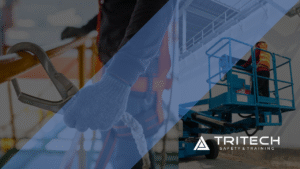At many large organizations, you can get whatever you need and want. However, an unlimited safety budget isn’t in the cards for most companies. More often than not, you’ll need to work within tight monetary constraints to meet your safety needs. This can be a problem when there seems to be a cost to everything, and you have to pick-and-choose what works and what doesn’t.
When faced with the impossible task of budgeting the health and safety of your workers, the key is to use your funds and resources only on those things that really matter. This is especially important for small business owners who want a safe work environment without breaking the bank.
With the right plan in place, you don’t have to sacrifice your workers or your money—you can have the best of both worlds. Here are our five ideas for using your safety budget effectively and efficiently.
1. Purchase Quality
You might be tempted to save the most money by stretching your budget and purchasing discount personal protection equipment (PPE). This is the wrong move. Skimping on quality when it comes to PPE and other equipment could be disastrous and cost you more in the long run.
Yes, it might seem more economical to buy the $20 (CAD) TPR (Thermal Protective Rubber) Gloves that meet the requirements and regulations compared to the $180 (CAD) ones, but you get what you pay for. Higher quality equipment is, typically, more comfortable, offers better functionality, and includes additional features. This might seem extraneous, but if the gloves are more comfortable and easier to use, then there’s a MUCH better chance that your employees will actually use them.
To save money when buying quality, try buying in bulk. Many companies will offer discounts if you purchase more than one item at a time. Or you can contact a supplier to see if they can get a better price than what you find online or in store.
2. Safety Training
Safety training is probably the number one most cost-effective way to protect your business and your employees. Training your employees to handle hazards and to react appropriately in an emergency will keep you from additional trouble in the long run. And third-party training doesn’t have to kill your budget.
At TriTech, you receive excellent training from high-quality instructors, and you can choose what works for you. The most affordable option is to send your employees to a pre-scheduled training course, but there are also options for on-site training as well as custom corporate training—if you want to train all your employees at once.
And TriTech gives you a lot for your money. They offer excellent administrative support before, during, and after. Plus there are NO cancellation or no-show fees as well as no class minimums.
3. Determine Needs VS Wants
What your business needs to be safe is not the same as what you want. For example, you might need to hold a safety meeting once a month, but it doesn’t need to be a two-day extravaganza with breakfast and lunch. Sometimes it’s better to hold a meeting more often and keep it short and sweet to cut down on costs and loss of work productivity.
There are also times to splurge and times not to. While we already mentioned that quality is important, there’s no need to splurge on a $340 (CAD) pair of slip resistant, steel toe boots when a $125 pair is just as effective. Make sure before you make any purchase that it falls under the “need” category.
4. Hire Smartly
You’ll save a lot of money if you hire the right employees in the beginning. When you’re short on staff, it can be tempting to hire the first people you come across just to get people in the door, but this is a mistake. Hiring an incompetent worker is a surefire way to increase your risk of injuries on the job site.
Instead, you should carefully screen all your candidates and spend your budget on finding new employees with the skills and experience you need to get the job done. This means you’ll need to take the hiring process more slowly and include supervisors and other employees in the process to make sure you do the job correctly.
5. Keep Up with Maintenance
It’s much more cost effective to keep your current equipment running efficiently than to have to always purchase new equipment. Keeping your systems in top working order can extend their life cycle. In the end, spending a couple thousand a month to keep your large equipment in tip-top-shape for over a decade is much more budget friendly than having to spend tens of thousands of dollars to replace your equipment every few years.
Plus, regular maintenance improves your efficiency. Equipment that operates at its full capacity will help you get more work done in less time. And well-maintained equipment has less downtime, so you don’t lose productivity.
Even a tight safety budget doesn’t have to slow you down. Just remember, there are a lot of right answers and every company should use their safety budget in the best way for them. The key is to spend your money on items and opportunities that keep your workers safe and the future of your company protected.





